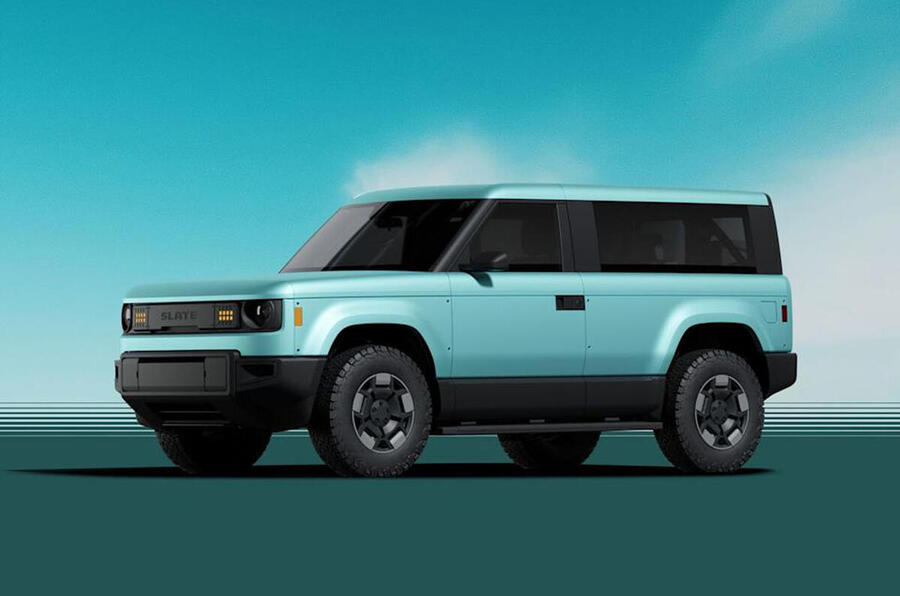This post was originally published on Autocar
Tisha Johnson previously spent several years working for Volvo | Image: Getty Images
It’s no good having a cheap car if nobody wants it, believes Tisha Johnson, designer of the innovative Slate Truck
The design boss of Slate Auto, the American start-up backed by Amazon that plans to launch a bare-bones, £20,000 electric pick-up truck in 2027, believes “people deserve to have a car that they can afford” and the concepts of desirability and affordability should be “inseparable”.
Speaking to the Autocar Meets podcast from the Car Design Event in Munich, Tisha Johnson said the “clear, overwhelming response” to the Slate Truck’s unveiling last month has been “oustanding and somehow surprising” but ultimately reflective of the public’s desire for more affordable yet still attractive cars.
Prior to joining Slate, Johnson spent several years at Volvo’s North American design studio, primarily focused on interior development, before taking a break from the automotive industry with stints at appliance manufacturer Whirlpool and furniture maker Herman Miller.
Asked if those experiences have informed the utilitarian, functional design of the Truck, and whether it could be considered an appliance rather than a car, Johnson said: “I haven’t contemplated it as an appliance. When we first started talking about what we were going to do, there were two objectives that were inseparable. The first thing was to provide affordable transportation, a car that people could afford, and the second was to make it desirable.
“And that is exactly why I knew I was in the right place, because [those things] should be inseparable. People deserve to have a car that they can afford.”
Johnson said that the Slate project appealed specifically to her desire to have a “meaningful impact for society and on people’s lives” and gave her an opportunity to fulfil a prevailing career ambition: “It was concerning to me that I hadn’t delivered affordable mobility, an affordable car, to people.”
Indeed, the Slate Truck is tipped to be one of the most affordable pick-ups – electric or otherwise – on sale in the US, with a targeted start price of just $27,000 (£20k) before incentives.
That puts it roughly on a par with the entry-level, petrol-engined Ford Maverick and makes it roughly half the price of the Ford F-150 Lightning – currently America’s cheapest electric truck.
Crucial to the Slate’s low list price – and, Johnson argues, its mass appeal – is a bare-bones cabin that eschews much of the advanced technology and equipment common to new cars, featuring manual seats, no stereo as standard and a device mount in place of a touchscreen, for example.
“We’re not showing up with a bunch of fancy screens that some would say are corrupting the interior environment,” said Johnson. “We just respect the fact that people know what they want in their own tech that they’re carrying with them. Let them nest their phone or a tablet, if they want to, and then just get back to the act of driving.”
As well as helping customers to “declutter their lives”, this helps to keep the cost of manufacturing down and for Slate to “pass dollars back to our customers”. It’s an approach similar to that taken by the Dacia Spring and Citroën ë-C3, among Europe’s cheapest electric cars, but Johnson said Slate wasn’t directly influenced by the tactics of other value-focused car makers.

“We understood our industry and we will continue to recognise what’s in the landscape, but I would say we are probably the least influenced by the directionality of industry players,” she said.
The second part of Slate’s ethos – that affordable cars can still be desirable – manifests in an endless array of personalisation options for the Truck, ranging from vibrant liveries and chunky cladding, to different wheel designs and even the choice of bodystyle – with DIY kits available that turn the Truck into a compact, straight-backed SUV or a fastback crossover as needed or desired.
Johnson said the aim was that “the person looking at it can overlay some interesting possibilities, and that’s exactly what Slate is; it’s just full of possibilities.
“First and foremost, we want people to love the car, and that emotional impact and experience was prime for us as a design group: really evoking an emotional response, love in particular.”
The commercial implications of this approach are significant, too: Slate is able to build just one basic model line at its factory in Indiana, thereby minimising its tooling and supply chain costs, yet appeal to as wide a demographic as possible.
“We kept it simple: one vehicle type that is manufactured off the line and then tons of possibilities from there,” said Johnson.
“It’s really an intentional turn in a different direction.”
Could slate go global?
In a word, no. At least not immediately. Johnson said the nascent company is “focused on an American truck that we can deliver in the US; that is fully our focus”.
The Truck has been designed precisely to appeal to American customers and to comply with all the US’s light commercial vehicle (LCV) homologation rules, and the possibility of exporting it worldwide isn’t currently on the radar.
The UK’s rules about importing and registering foreign vehicles are much more lax than the US’s, though (making it fairly easy to get a new Ford F-150, for example), so the prospect of running a Slate left-hooker on British roads in the next few years isn’t off the cards.

